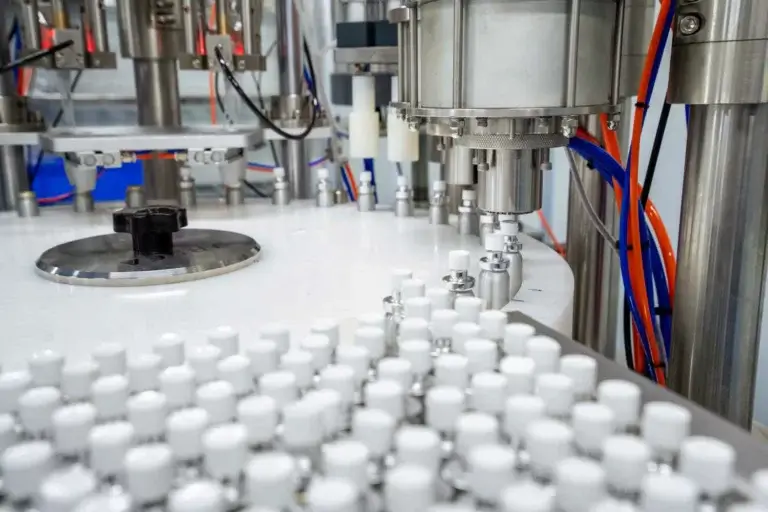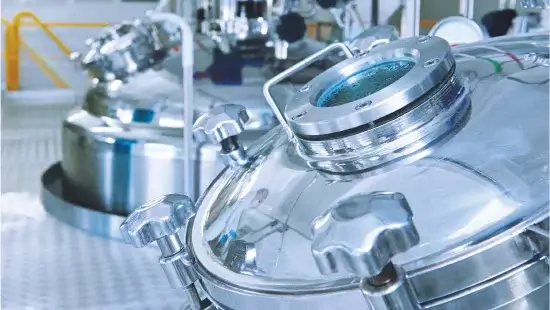When we talk about skin hydration, we immediately think of creams and serums enriched with nourishing agents. However, some use the physiological serum as a moisturizer, boasting its soothing properties and cooling effect. But Is it really a good moisturizer or is it a misconception?
If you are a laboratory or a pharmaceutical group, this topic may also interest you from a point of view product innovation and market positioning. SO, Does physiological serum have a role in dermatology?Let’s explore its properties and potential applications together.
Does saline solution really hydrate the skin?
THE physiological serum is an isotonic solution of 0.9 % sodium chloride (NaCl), identical to the salt concentration of body fluids. This characteristic allows for use very well tolerated by the skin and mucous membranes, but Does it give it moisturizing properties?
👉 What it can do:
✔ Refresh the skin and provide a soothing feeling.
✔ Remove limescale residue after cleaning with tap water.
✔ Gently cleanse sensitive or irritated skin after dermatological treatment.
🚫 What it can't do:
❌ Retain water in the epidermis, because it does not contain neither humectants nor occlusive agents.
❌ Nourish the skin or strengthen the skin barrier.
❌ Replace a moisturizer or serum rich in moisturizing active ingredients.
💡 Intermediate conclusion : Physiological serum does not hydrate the skin in the sense that it does not prevent water loss. However, it is an excellent supplement to prepare or soothe the skin.
When and why should you use saline solution on your skin?
Although it is not strictly speaking moisturizing, physiological serum finds applications in dermatology and skin care.
1. After a dermatological procedure
After a chemical peel, microdermabrasion or laser treatment, the skin is weakened. Physiological serum allows for gentle cleaning, without perfume or irritating preservativesIt is often recommended by dermatologists to rinse the skin after a cosmetic treatment.
2. For reactive and atopic skin
People prone to eczema or dermatitis have an altered skin barrier. The use of physiological serum allows to cleanse the skin without damaging it, but must be followed by a lipid-replenishing cream to prevent water evaporation.
3. As a base before applying moisturizer
Used as a mist or tonic, physiological serum can prepare the skin to receive a moisturizing treatment by eliminating limescale residues present in tap water.
💡 Trick : Applying a moisturizer immediately after using the physiological serum allows to “fix” the humidity and prolong the feeling of comfort.
Comparison with other dermatological solutions
| Product | Hydrates the skin | Soothes irritations | Contains active agents | Recommended use |
|---|---|---|---|---|
| Physiological serum | ❌ No | ✅ Yes | ❌ No | Post-procedure, skin preparation, reactive skin |
| Thermal water | ✅ Slightly | ✅ Yes | ✅ Yes (trace elements) | Daily soothing, redness |
| Moisturizing cream | ✅✅ Yes | ✅ Yes | ✅ Yes (humectants + lipids) | Long-lasting hydration, skin repair |
💡 Physiological serum is positioned more as a preparatory or post-procedure treatment, and not as a moisturizer in its own right.
Why should pharmaceutical laboratories and groups be interested in this trend?
The market of dermatological care without preservatives and allergens is expanding.
🎯 Opportunities for laboratories:
✔ Develop a specific post-care range by integrating an enriched physiological serum.
✔ Position yourself on the market for sensitive and reactive skin.
✔ Create a credible alternative to thermal waters, but with a strong scientific argument : sterility and purity guaranteed.
Conclusion: A myth, but also an opportunity for innovation?
Physiological serum does not moisturize the skin, but it plays a key role in certain dermatological care protocols. Rather than thinking of it as a moisturizer, it can be integrated as a pre-treatment, post-procedure soothing, or an alternative to traditional cleaning solutions.






